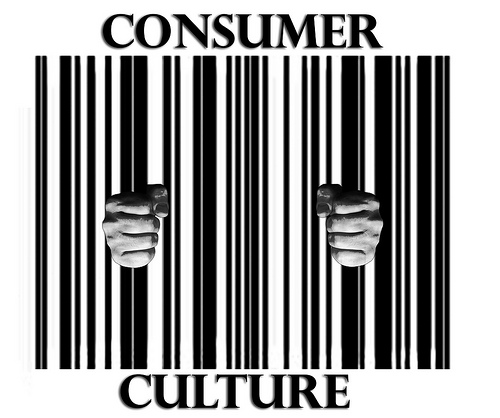
As robots become more advanced, more jobs may be automated. Today's robots can automate 25% to 25% of jobs. However, people still need to program them. The ever-increasing capabilities and abilities of robots will eventually take some jobs out of existence. Humans will always be needed to handle unforeseen situations. In the following article, we will examine the various advantages that robots can bring to different tasks. We'll be focusing on general-purpose autonomous robots as well as teleoperated robotics.
Cost and complexity
There are two types of basic robotic systems. The first uses vacuum grippers and air supply to pick up objects and place them. Although the second type doesn't require an air supply or compressor it will need a control system to open valves, activate servos and sense objects' position. These systems are controlled by embedded computers or programmable logic controllers (PLCs).

Applications
Robotics are used worldwide in a variety of industries, such as manufacturing and medical research. Humans have invented robots and machines for many purposes over the centuries, including entertainment, religion and industry. Early Greeks built hydraulic statues that could impact temples. Others made mechanical robots for fun. The Industrial Revolution brought us the first computers. Robots are now being used in almost any industry, from factory automation, to deep-sea transport.
General-purpose autonomous robots
General-purpose Autonomous Robots or GAARs can be described as machines that operate on their own without human supervision. They are designed to work in open environments and without supervision. They use sensors that detect the environment around them and use decision-making mechanisms to decide which course of action to take. A good example of a GAAR is the Roomba vacuum cleaner, which uses sensors to roam freely.
Teleoperated robots
Teleoperation is a field where human-robot collaborations can be limited by human factors like flexibility, shared understanding of the task and an appropriate intelligence level. However, it is sometimes impossible to detect the full environment information ahead of time for high-quality tasks. It is possible to improve the perception abilities and synchronisation of teleoperated machines. Teleoperation systems can achieve transparency, security and synchronisation thanks to the advancements in perception. Ultimately, teleoperation systems must overcome these challenges while remaining in compliance with human capabilities.

Dependent robots
A dependent robot can't move its own leg without instructions from its brain, which is unlike a human being. This can be achieved by using a neuro-programmable robot. This technology was developed in 1995 and has since been a leading industry standard in prosthetic limbs. It can also be programmed to perform tasks that are impossible for humans. This article will focus on the benefits of dependent robots in manufacturing and other applications.
FAQ
Is Tik Tok pop-culture?
Yes! It's not for teenagers. Anyone can use these short videos to show how they feel, express themselves, and share life moments with friends.
Every day, the app is used by over 200,000,000 people worldwide. This number continues to grow by millions every single day.
TikTok is a great way for brands to connect and create meaningful relationships with consumers.
TikTok is also home for many influencers who have built huge followings. These creators create original content that engages audiences across the globe.
So, what are you waiting? Here are four options to help you take advantage this trend.
-
Create Viral Content
-
Engage Influencers
-
Use Visuals Effectively
-
Create with Your Audience
What are examples of pop culture today?
Pop Culture is the 21st century's art form. It includes all types of entertainment including music, film TV, videogames, fashion and advertising. Neil Postman, an author, coined the term "pop" in his 1985 book Amusing Ourselves. Pop refers to mass communication that uses formulaic and cheap tricks to create an illusion or spontaneity.
However, he said that most people don’t enjoy true enjoyment because their culture has conditioned them to want media experiences that make it seem superior to others. In addition, he argued that this type of cultural expression had contributed to the loss of critical thinking skills among young adults.
Pop culture has also been referred to as popular culture or consumerism.
What is the origin of pop music?
It was an accident. It was an accident. The first song was accidentally written when someone knocked over the piano while playing on New Year's Eve 1920.
The recording company liked what it heard and decided that the single would be released.
This single was the first to be officially recorded.
Pop music is today the most popular form musical entertainment.
Who came up with the term Pop Music?
Frank Zappa invents the term pop music. He used the word pop music to describe his style of music.
He said that he wanted music to appeal to everyone. His music is called pop music because of this.
Zappa also invents the phrase "You'll know it's pop when ..."". It means that something is extremely popular if you have many people enjoying it. Michael Jackson's Thriller record is one of the most successful.
Zappa has a different definition of pop music than we do today. Pop music can include all music. But, there were only certain types of music that was considered pop back in those days.
What can pop culture teach us about ourselves?
Our society today is more concerned with material goods than everything else. This is especially true for younger people. They spend hours per day looking at screens. They watch movies, play video games, and surf the web. All of this distracts them from focusing on school work. This causes them to fail classes.
It is a world where everyone wants in. That means being popular. Popularity is dependent upon having money, clothes and other possessions. This causes some people to do things they don't like.
We have become dependent on technology. Technology has given us access to all kinds of information. Unfortunately, not everything is accurate. False rumors are floating around the Internet. These rumors spread quickly because people share them on social media sites. It is easy to share something without verifying its truth.
People have lost their ability to think critically. They believe what they see online. They trust what they hear on television and in magazines. They stop thinking for and about themselves. Instead, they follow others.
When we rely on others to tell us what's happening, we lose control over our lives. Pop culture encourages us to rely on others. It also makes us lazy. It's true that there is truth out there but we don’t always find it.
How did pop culture develop?
Technology drove the development of popular culture. It developed as people became more mobile. Mass communication was made possible by the invention of radio. This was the beginning of television, which eventually led to the birth of the internet.
People started using computers at home and were exposed to computer games. These games were played on consoles like the Nintendo Wii and Sony Playstation 3. You can now download them online for free. Consequently, many young people play video games instead of watching TV.
Video games are extremely popular with teenagers and kids. These games can be played by one person or with others via the internet. Call Of Duty games and Grand Theft Auto have a lot of violence. Parents worry about their children's safety while playing these games. Some people find it thrilling to see what happens when a character is killed.
Music videos are another way that pop culture influences youth. They give information about current trends and celebrities. Young people enjoy watching them. It's obvious that music is a major part of our lives.
Many artists use special effects in music videos to enhance their songs. Rappers, for example, use makeup and wigs in order to appear more attractive. Others put themselves through extreme physical demands to show off their bodies. Many singers perform while wearing costumes.
You have so many choices in music today. You can listen to anything you want. However, this isn’t always good news. Music can sometimes encourage violence. People become angry when they hear certain lyrics and words. Sometimes they even commit crimes.
50 Cent is a recent example of this. He sang Get Rich Or Die Trying. It contains the line "I'm gonna shoot a momfucker down / Although I don't understand why but I might." People thought this meant that he would commit suicide. A man threatened to kill him, and called him. 50 Cent changed the lyrics. It now reads: "I'll shoot an inchch down/ I'm not sure why, but I may."
Popular culture is essential. It's important that we understand how it affects and impacts us. If we don't, we won't be able to protect ourselves against its adverse effects.
How can we avoid falling prey to the temptations of pop culture?
We must first recognize when pop music is influencing our lives. We must then make sure we aren't being influenced by pop culture. Here are some ways you can avoid being influenced by bad influences
-
Avoid watching violent TV shows like Game Of Thrones.
-
Spend no time surfing the Internet. Read books instead.
-
Watch less television. Spend your free time doing healthy activities.
-
Take care what you post online. Remember that you can never delete comments once they've been posted.
-
Make sure that any websites you visit are safe. Before you provide personal information, be sure to check them.
-
Don't allow anyone to pressure you into dangerous actions.
If you see yourself becoming addicted to pop culture, talk to an adult who will help you. You can reach out to your local library or National Center For Missing &exploited Children (1 800-THE LOST).
Statistics
- Latinos represent roughly 19% of the U.S. population. (npr.org)
- According to Dictionary.com, popular culture, or low culture as it is sometimes referred to is comprised of the “cultural activities or commercial products reflecting, suited to, or aimed at the tastes of the general masses of people” (7/21/19). (socialsci.libretexts.org)
- According to CNBC.com, “more than 70% of the film's revenue came from countries outside the US” (https://www.cnbc.com/2019/01/08/aqua...nal-sales.html, ret. 8/18/19). (socialsci.libretexts.org)
- Recently, the market share across Western Europe has ranged from 60-75% (Hopewell, 2013). (socialsci.libretexts.org)
- Yet a Nielsen study shows they account for 42% of the country's most-watched content on streaming services. courtesy Nielsen (npr.org)
External Links
How To
Which movie contains the most references to pop culture?
The Matrix (science fiction action film) is directed by Lana Wachowski. Written by Andy Wachowski as well as Lana Wachowski. Warner Bros. Pictures released the movie on May 21, 1999. Stars included Carrie-Anne Moss (star), Hugo Weaving (star), Laurence Fishburne (star), Mary Alice, Joe Pantoliano and Bruce Willis.
Neo (KeanuReeves), an aspiring computer programmer, discovers he lives within a virtual reality simulation called the "matrix." He set out to discover how and why his world was created. He meets Morpheus (Hugo Weaving), an agent of the rebel group Zionists; Trinity (Carrie Anne Moss); a program designed to help him understand what the matrix is all about; and Agent Smith (Laurence Fishburne).
The film received positive reviews from critics and grossed $821 million worldwide against its budget of US$150 million.
It was nominated for the Academy Award for Best Cinematography as well as the Golden Globe Awards and Screen Actors Guild Awards.
The Matrix is frequently regarded as one of the most important movies of all-time. Time magazine placed the Matrix at #3 on their 2003 list of the 100 greatest films from 2000 to 2004.
In 2007, Empire Magazine listed The Matrix at number 12 on their list of the 500 Greatest Movies Ever Made.
Rolling Stone named The Matrix as the 9th best action film ever in 2010
Both The Matrix Revolutions (Reloaded) and The Matrix Reloaded (Reloaded) were released in 2003.
The Matrix is a common reference point for video games, especially those with first-person shooter mechanics.
Call of Duty has a mission called "The Matrix", that takes place after the movie's events.
South Park's episode "The Death Camp of Tolerance", contains a scene in which the characters view The Matrix.
A scene in Halo 4 from 2012 features a character viewing The Matrix.
Borderlands 2's 2013 videogame features a side quest named "The Matrix."
Destiny's 2014 videogame featured a playable protagonist who was able to use "The Nebuchadnezzar," a power weapon that is based on the film gun.
Fallout 4 is a 2015 videogame that includes a DLC called "The Power Armor Files." It contains a short story and revolves around Neo wearing a power armor suit.
Overwatch, a 2017 video game, has a unique ability called the "Matrix Cannon" which can be used to fire energy bombs like lasers or bullets.
The 2019 video game Doom Eternal features a level called "The Matrix".
The jacket of a character in Metro Exodus 2018, a 2018 videogame, features a patch with the movie's logo.
The 2019 videogames Mass Effect: Andromeda, Shadow of the Tomb Raider have a mission called "The Matrix".
The 2019 Star Wars Jedi Fallen Order videogame features a mission called "The Matrix", which features Neo dressed as a character.